The Universal Language of Visual Storytelling
In a series of paintings, illustrations, and sculptures, seven NYU artists craft captivating visual narratives.
Under the Arch
The Universal Language of Visual Storytelling
In a series of paintings, illustrations, and sculptures, seven NYU artists craft captivating visual narratives.
While “storytelling” as a medium typically connotes verbal or written language, it can also be a visual technique used to convey a message. The abstraction of language leaves more room for interpretation, making even the most personal stories accessible and relatable. Using a variety of mediums, these seven artists reinterpret existing narratives, illustrate personal experiences, and create formally compelling compositions.
Samantha Williams
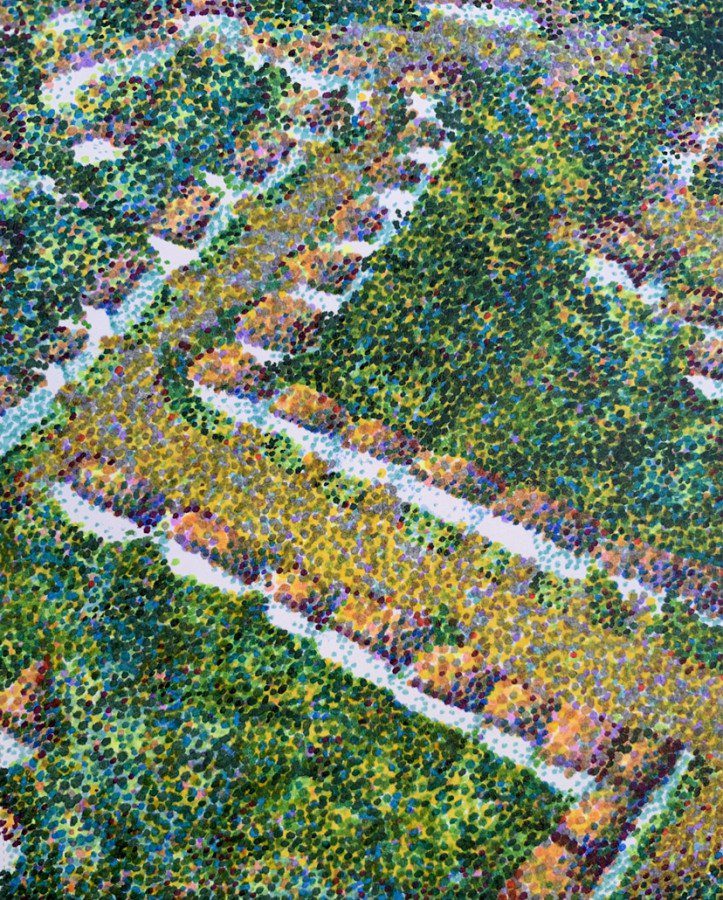
“Little Boxes from Above,” 2020, marker on paper.
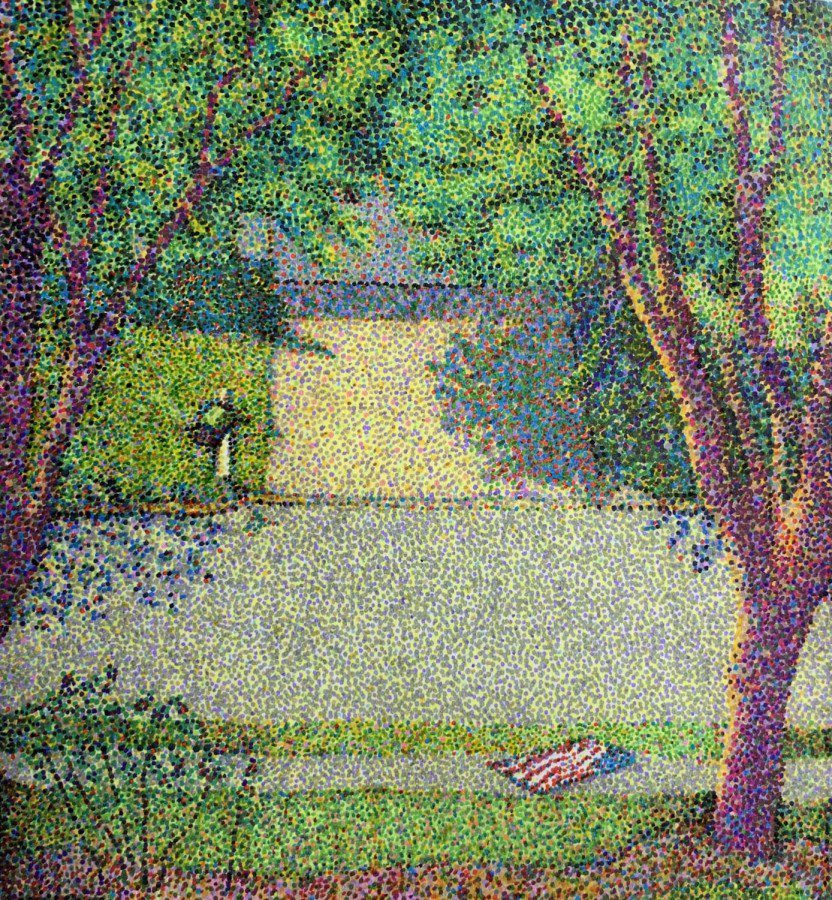
“Stars and Stripes,” 2021, marker on paper.
Using a visually complex pointillism technique reminiscent of Georges Seurat, Samantha Williams creates vibrant compositions of suburban landscapes. Her piece “Little Boxes from Above” focuses on the experience of growing up in the American suburbs. The recurrent nature of these structures is emphasized by her repetitive technique, highlighting the idea that neighborhoods like this one exist all across the country, however they are often indistinguishable from each other. Similarly, “Stars and Stripes” explores the fraught relationship between the suburbs and patriotism, which Williams believes is a vital component of growing up in this kind of environment.
Jara Lopez
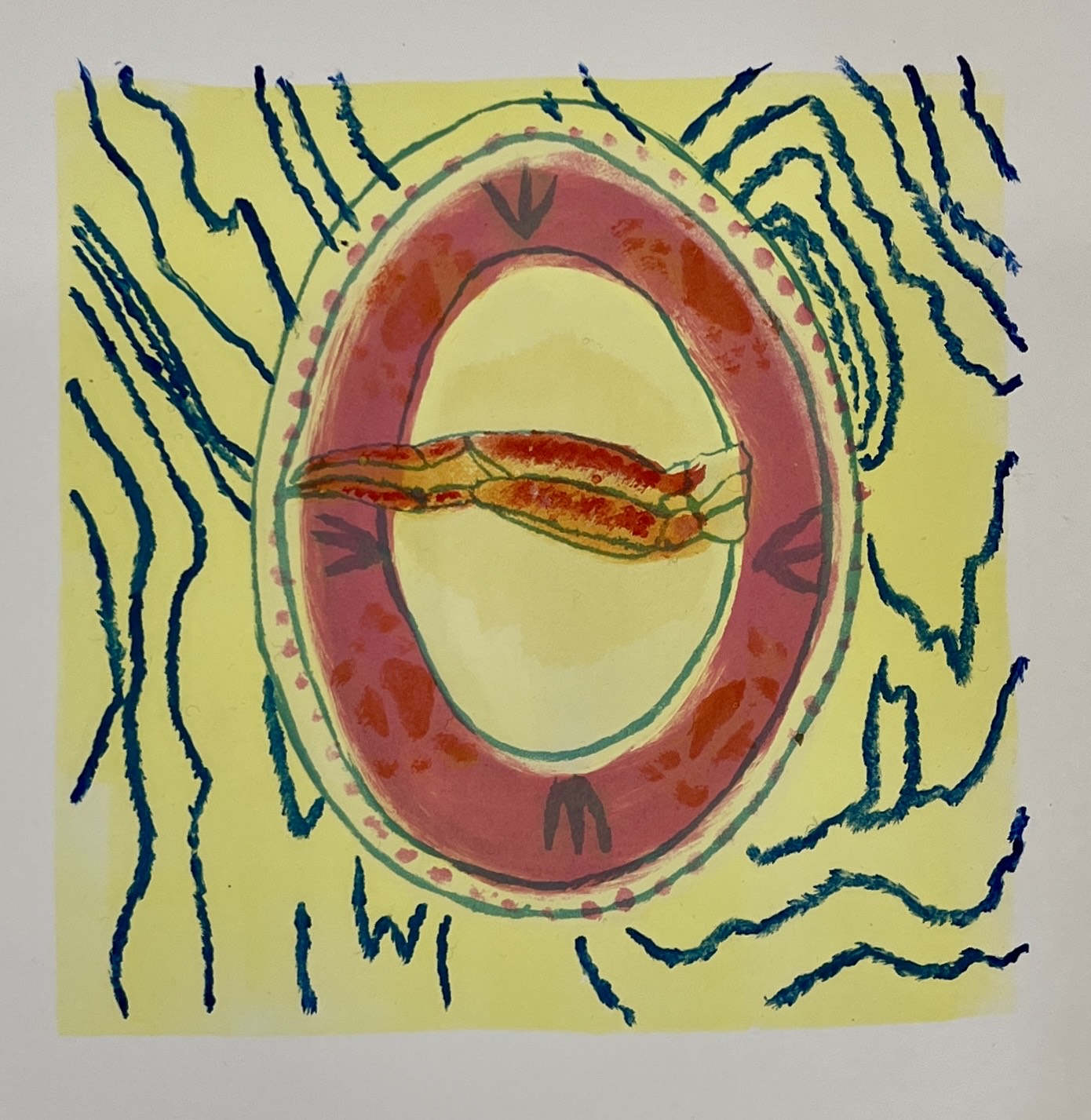
“Untitled,” 2022, monotype print.
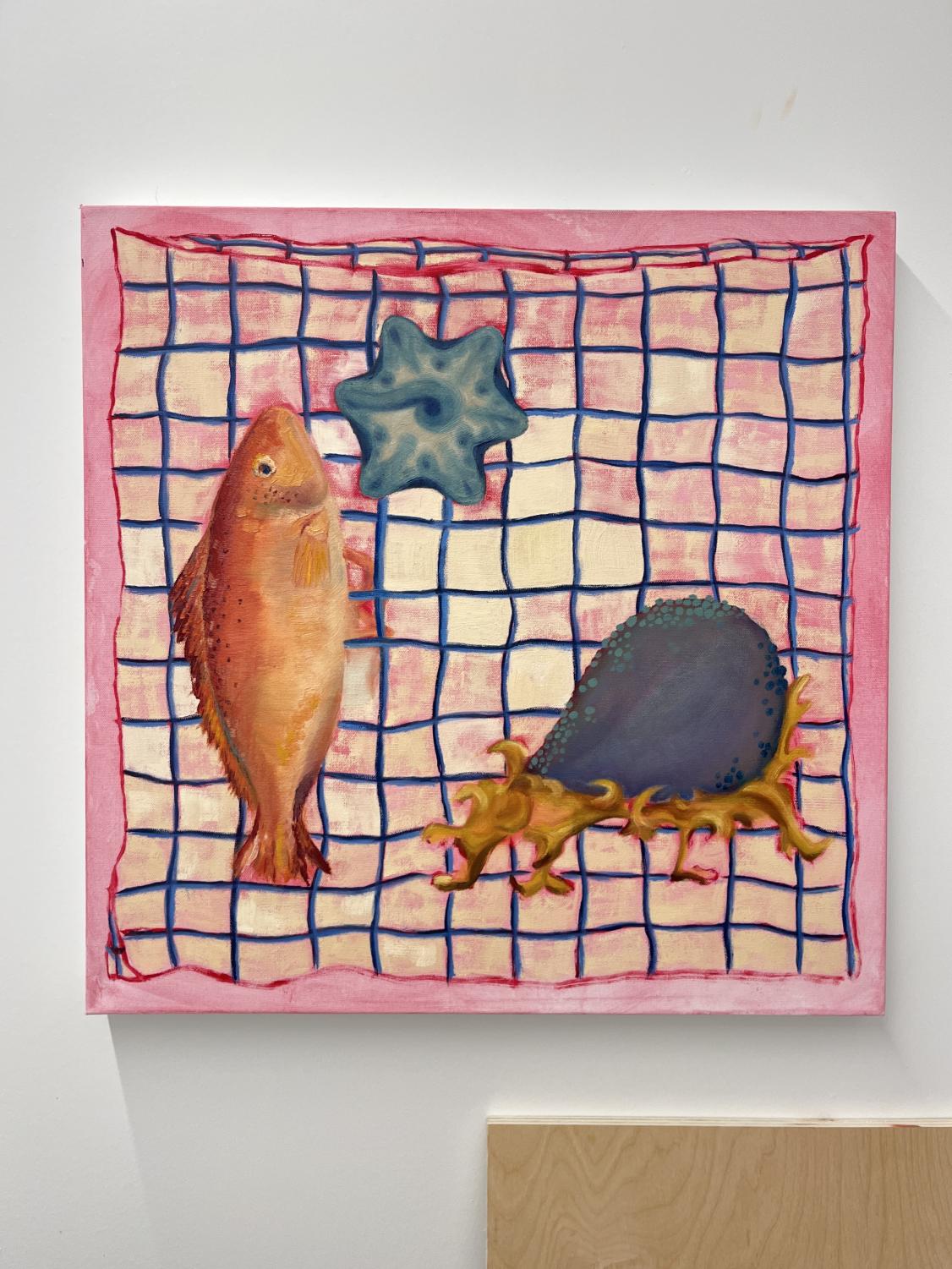
“Piscatory Ring,” 2022, oil on canvas.
Jara Lopez describes her work as “an incessant loop of reconfiguration, interrogation and revision.” In works like her 2022 oil painting “Piscatory Ring,” she uses imagery of sea creatures to explore notions of femininity, intimacy and domesticity based partially on the historical significance of this kind of iconography. According to her research, sea creatures and various floral subjects have been used in the past as symbols for the female and the erotic. Lopez’s goal in appropriating this age-old imagery and symbolism is to recontextualize them within her own practice and contemporary forms of creating meaning.
Dina Bodner
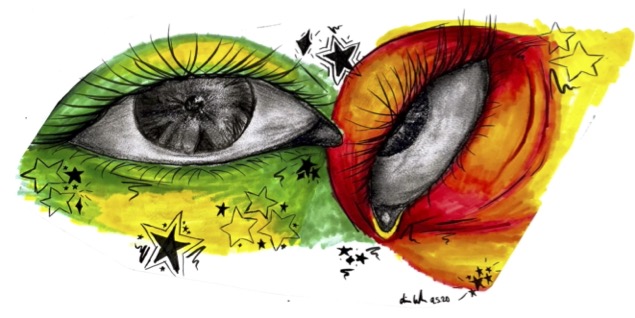
“Im so tired,” 2022, alcohol based markers and charcoal on multimedia paper.
Playing on themes of human emotion, universal experiences and physicality, Dina Bodner creates eye-catching paintings and drawings. In “Im so tired,” she juxtaposes highly saturated marker in reds, greens, and yellows with muted charcoal to create a uniquely stylized composition of two eyes. The stark contrast in color and direction of the gaze emphasizes how tiring it can be to put on an enthusiastic front simply for show.
Yuna Baek
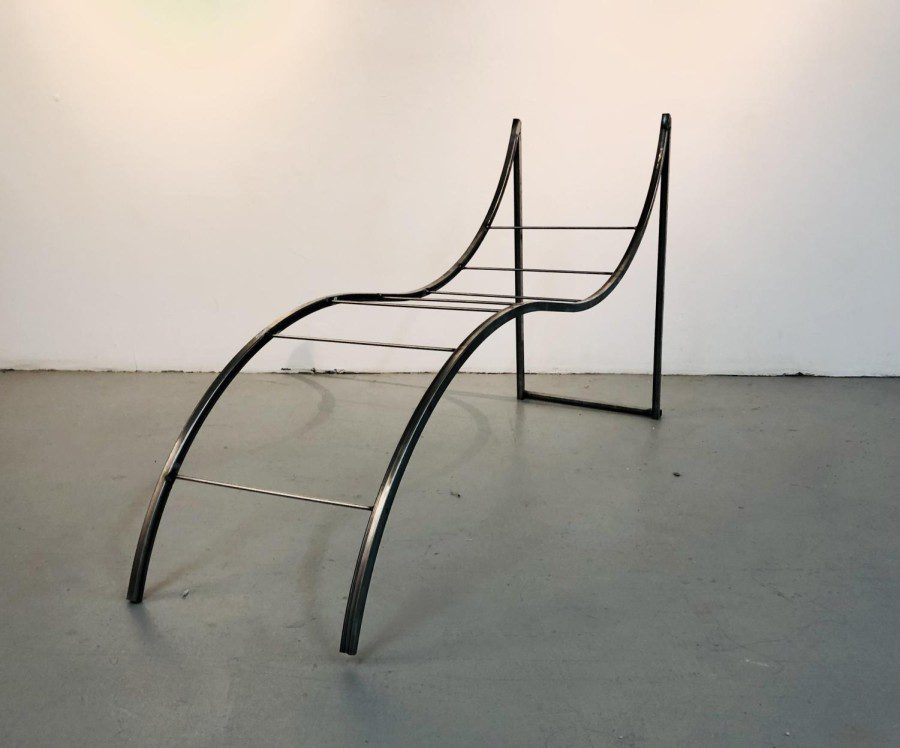
“Playground Equipment,” 2022, metal.
Yuna Baek’s striking metal sculpture, “Playground Equipment,” combines the design elements of both monkey bars and a slide. In recalling one of the most memorable aspects of her childhood — spending time at local parks and playgrounds — she created an entirely new structure comprised of her favorite playground equipment. The shape is immediately recognizable, and evokes the tenderness of childhood nostalgia despite the physical harshness of its materiality.
Max Van Hosen
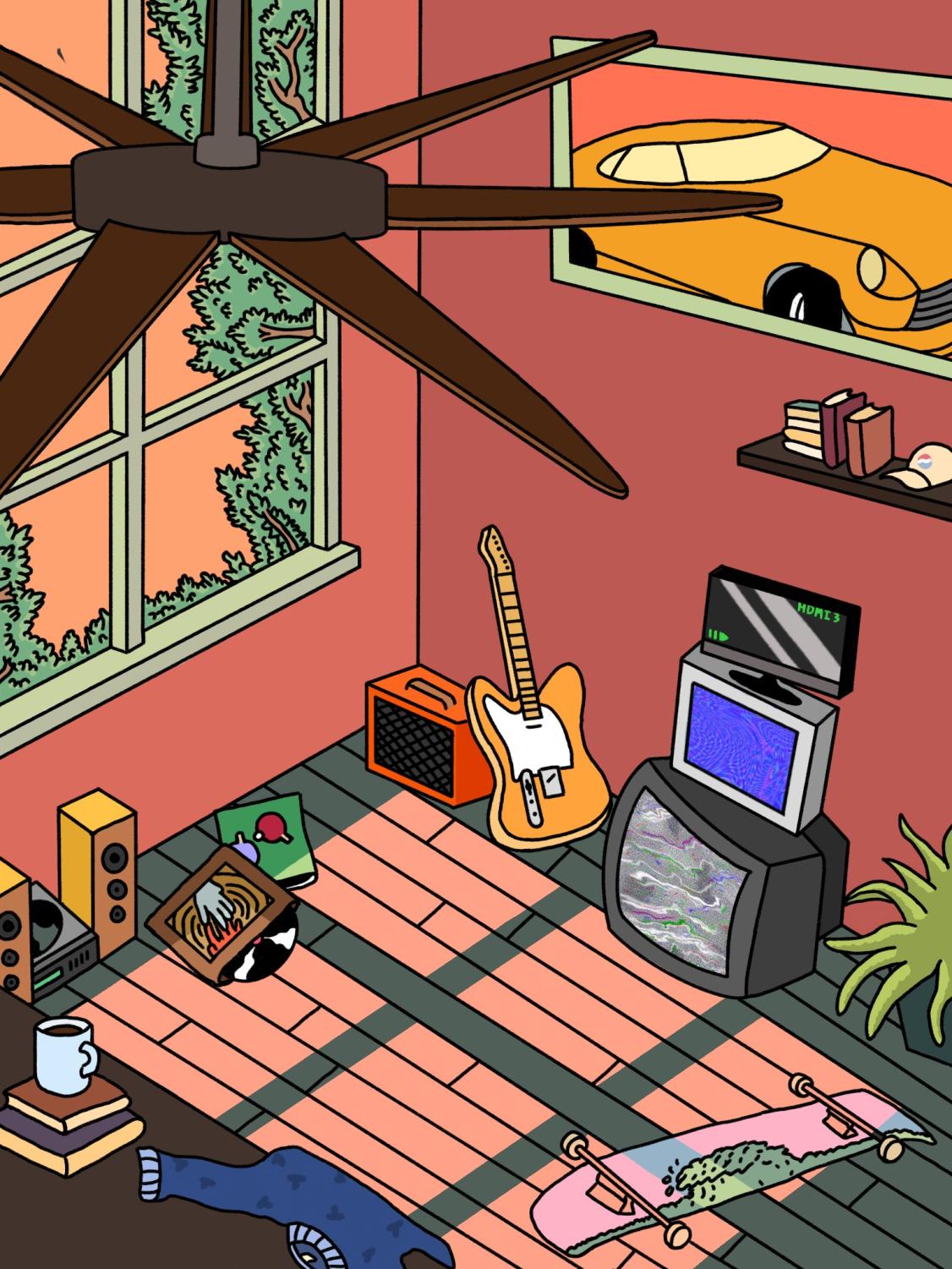
“Sweet Nostalgia,” 2022, digital.
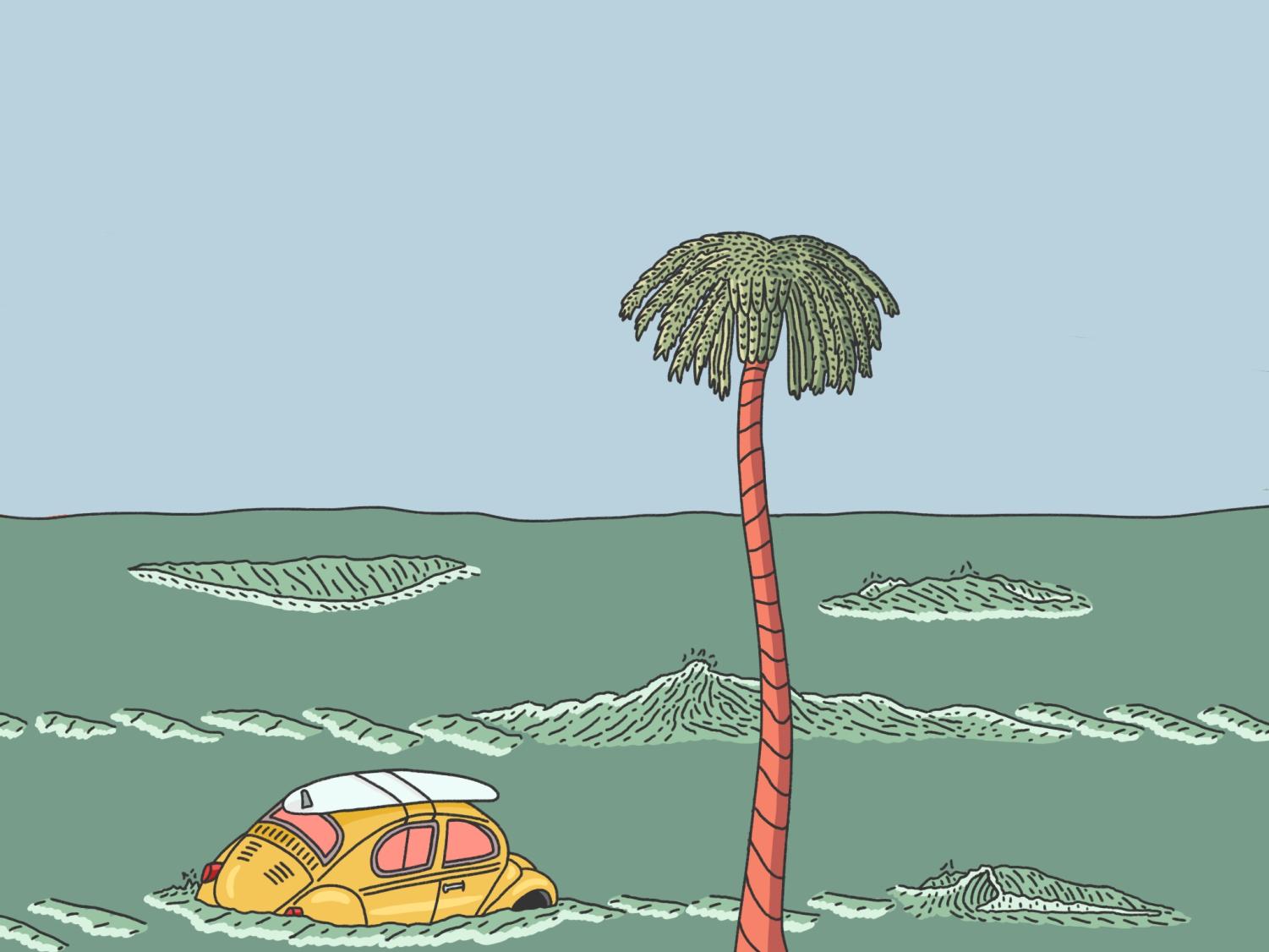
“Driftwood,” 2022, digital.
In his warm, captivating illustrations, Max Van Hosen engages with themes of memory, object permanence and serenity. His piece “Sweet Nostalgia” features a bedroom scattered with the puzzle pieces of a person’s life: a record player, a cup of coffee, dirty laundry, a vintage Japanese car poster, various screens, an electric guitar, and a plant. Toeing the line between still life and portrait, Van Hosen’s work invites the viewer to consider the meaning of material objects when the identity and whereabouts of their owner is unclear. “Driftwood” explores a similar perspective on materiality, with the imagery of an old Volkswagen Beetle being washed away showcasing the temporality of objects, especially when left abandoned. Despite a clear emphasis on man-made objects and what they represent — particularly in contrast to nature — the beauty in Van Hosen’s drawings lies in their receptiveness to a multitude of interpretations and possible narratives.
Julia Merchan
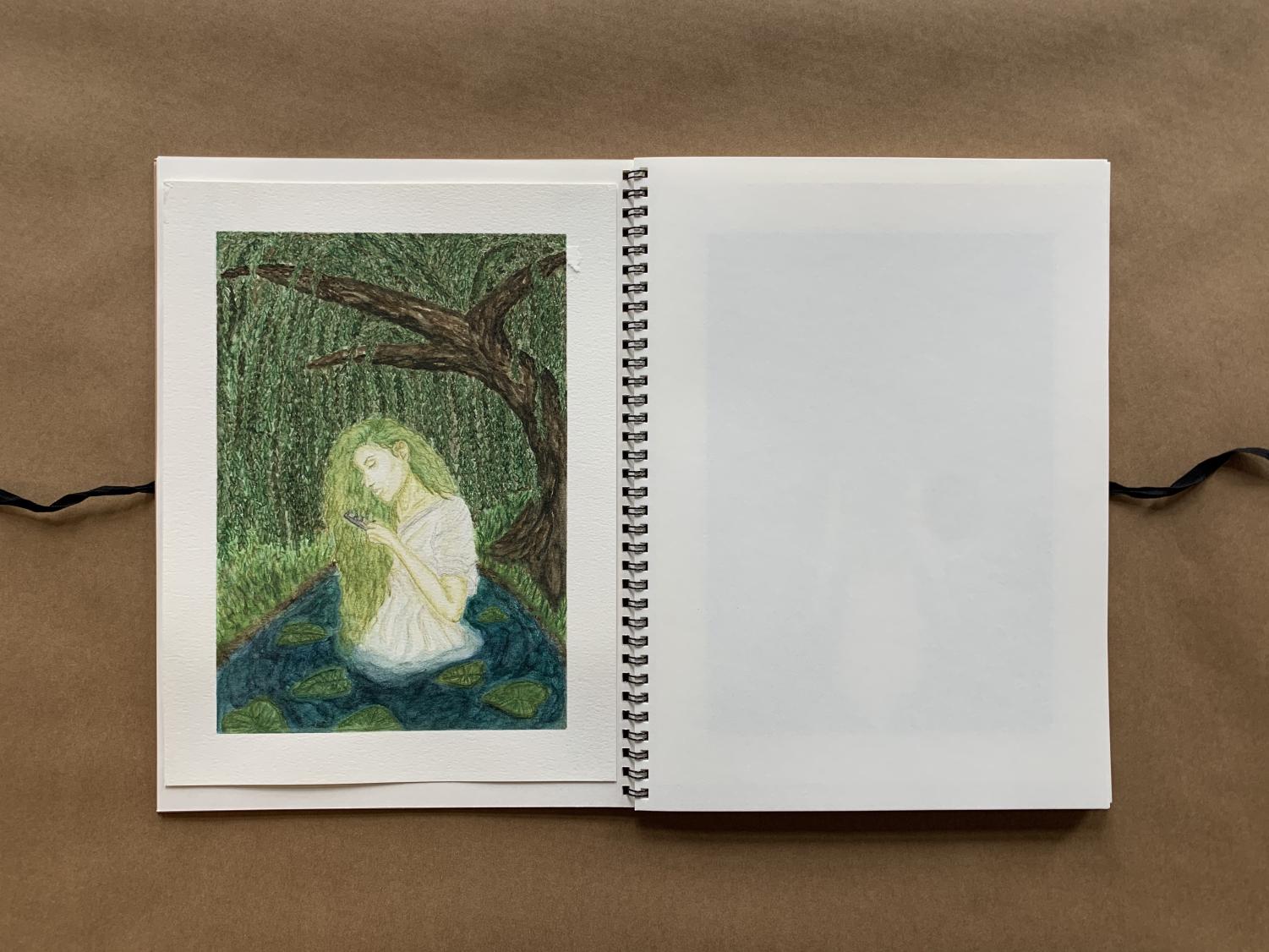
“Rusalka by the Willow,” 2022, watercolor, watercolor pencils, paper.
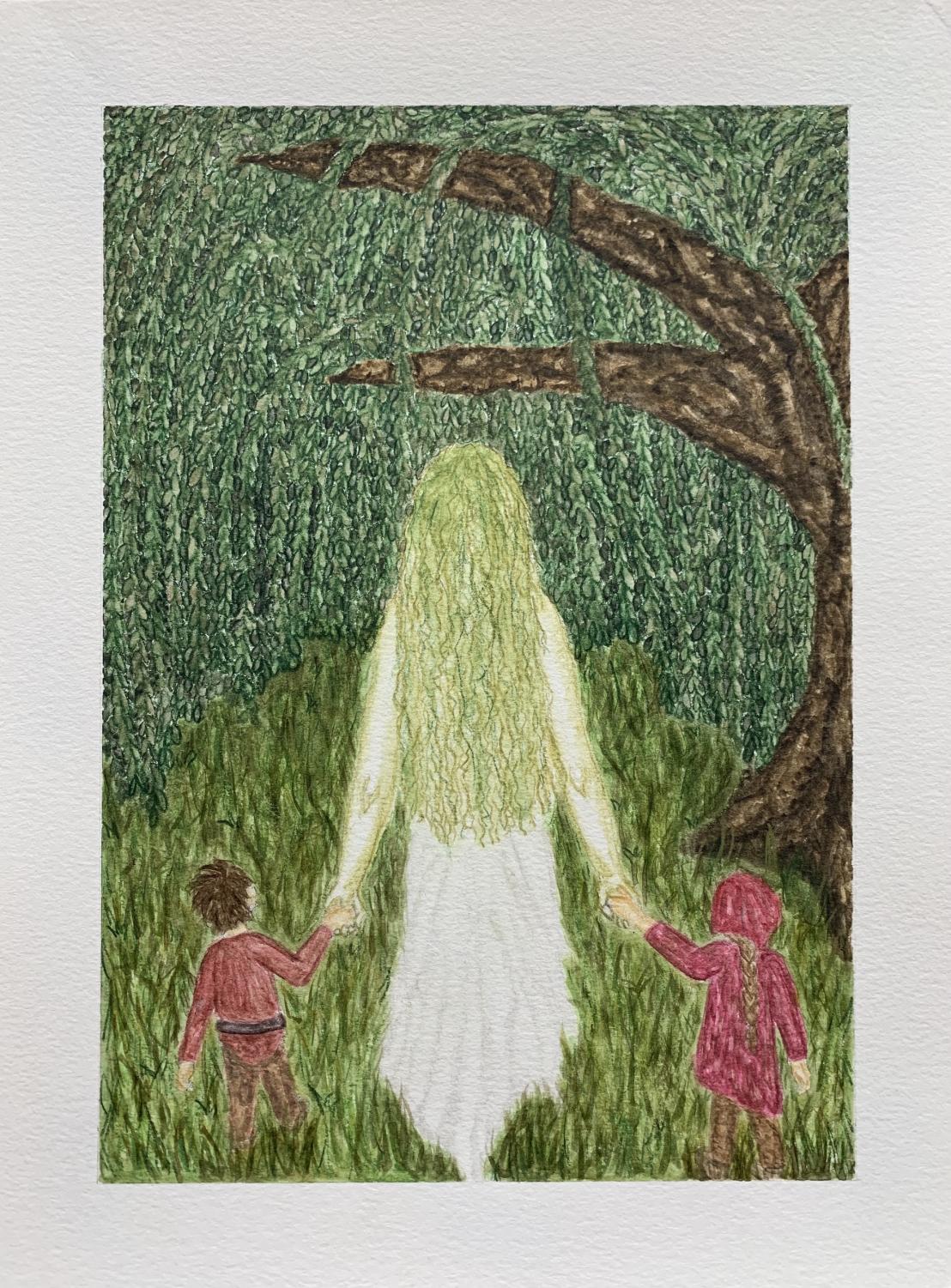
“Rusalka and Children,” 2022, watercolor, watercolor pencils, paper.
Based on a Slavic myth of a siren-like woman that seduces and drowns men, Julia Merchan’s Rusalka series explores the duality of womanhood in mythology, which often villanizes women without giving them room to be more than two-dimensional representations of the evils of femininity. “Rusalka by the Willow” highlights a key part of the myth: the creature’s loose, long hair. At the time the myth originated, cultural traditions surrounding how women wore their hair were incredibly strict, making this a noteworthy departure from traditional gender norms. Merchan’s piece “Rusalka and Children” further explores the way the Rusalka is perceived, honing in on more positive traits such as her maternal protectiveness over children. The journal-like format emphasizes the drawings’ narrative origins, allowing viewers to feel they are encountering this character in a book of her own.
Coco Guo
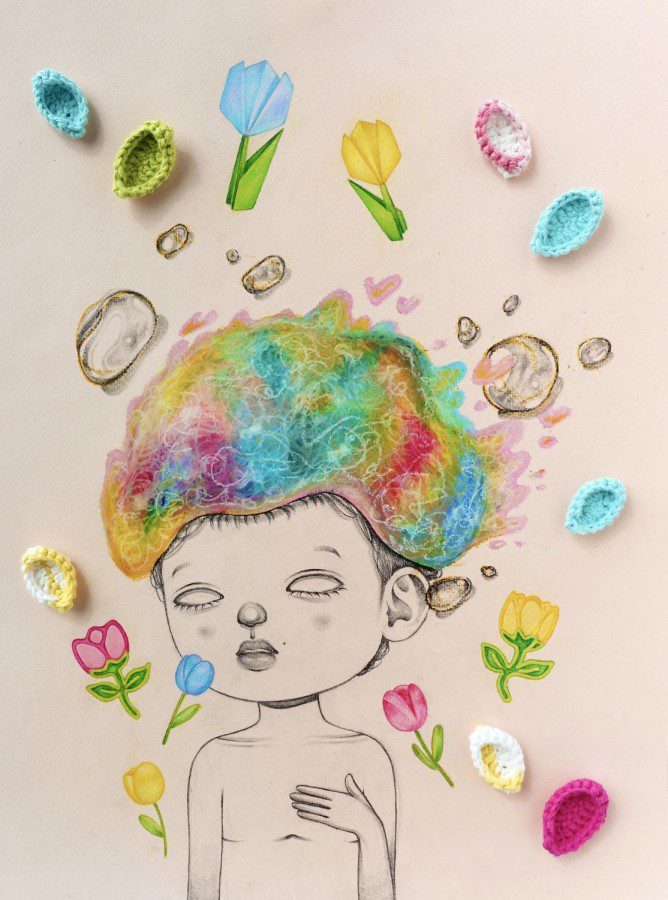
“Mazed,” 2022, color pencil, graphite, oil pastel and yarn.
In her captivating and delicately rendered “Mazed,” Coco Guo reinterprets the striking imagery of a blooming tulip. She describes it as one that has been ingrained in her mind since childhood. Guo recalls their personal omnipresence: “It was immersed in a sea of flowers in the Zhongshan nature park back in my home city in China; it was made into origami for the birthday star in kindergarten; it was just across the street in a fenced yard.” In this piece, she personifies the tulip, employing a subtle and perhaps somewhat sinister view that the seductive bursts of color are actually a tool to camouflage much darker inner feelings.






















































































































































